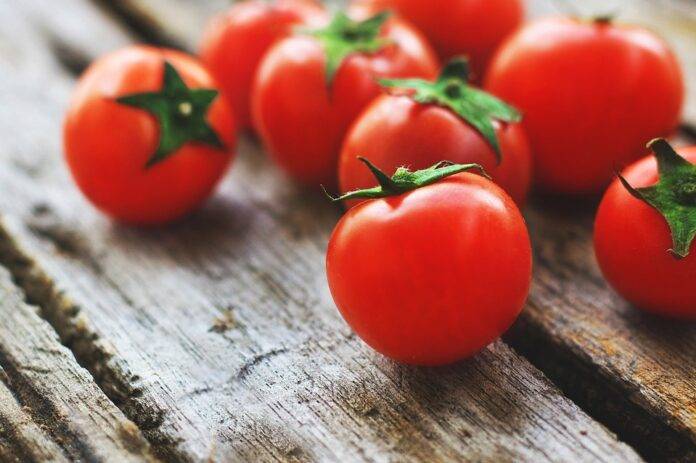Introduction
The global tomato market is a significant sector within the agricultural industry, with a wide range of applications in food production, processing, and consumption. Tomatoes are one of the most widely consumed vegetables worldwide, with a high demand for fresh tomatoes, processed products like sauces and ketchup, and canned tomatoes. In this industry report, we will analyze the trends, opportunities, and challenges facing the global tomato market in 2025.
Market Overview
The global tomato market is expected to witness steady growth in the coming years, driven by increasing consumer demand for healthy and convenient food products. According to market research reports, the global tomato market was valued at $60 billion in 2020 and is projected to reach $85 billion by 2025, growing at a CAGR of 7% during the forecast period.
Key Drivers
Several factors are driving the growth of the global tomato market, including:
1. **Increasing Health Consciousness**: Consumers are becoming more health-conscious and are seeking out natural and organic food products, including tomatoes that are rich in vitamins, minerals, and antioxidants.
2. **Growing Demand for Processed Foods**: The rising popularity of convenience foods and ready-to-eat meals is boosting the demand for processed tomato products like sauces, soups, and juices.
3. **Expanding Food Industry**: The growth of the food processing industry, especially in emerging markets like Asia-Pacific and Latin America, is creating new opportunities for tomato producers and exporters.
Market Segmentation
The global tomato market can be segmented based on product type, application, and distribution channel. The key segments include:
1. **Fresh Tomatoes**: This segment includes whole fresh tomatoes sold in supermarkets, grocery stores, and farmers’ markets.
2. **Processed Tomato Products**: This segment includes canned tomatoes, tomato paste, sauces, ketchup, soups, and juices.
3. **Food Service**: This segment includes tomatoes used in restaurants, cafeterias, and catering services.
Trends
Organic Tomatoes
Organic tomatoes are gaining popularity among consumers who are looking for healthier and environmentally sustainable food options. The demand for organic tomatoes is expected to grow significantly in the coming years, driven by increasing awareness about the benefits of organic farming practices.
Technology Adoption
Advancements in technology are transforming the way tomatoes are grown, harvested, and processed. Precision agriculture techniques like drip irrigation, greenhouse farming, and vertical farming are being adopted to improve crop yields and quality.
Sustainable Practices
Sustainability has become a key focus for tomato producers and processors worldwide. Sustainable farming practices like water conservation, integrated pest management, and waste reduction are being implemented to minimize environmental impact and ensure long-term viability of the industry.
Opportunities
Export Markets
The global demand for tomatoes is creating new export opportunities for producers in countries like China, India, Mexico, Spain, and Italy. Exporting tomatoes to international markets can help diversify revenue streams and increase profitability for growers.
Value-Added Products
There is a growing demand for value-added tomato products like gourmet sauces, flavored ketchups, organic juices, and dried tomatoes. Developing innovative products that cater to changing consumer preferences can help companies differentiate themselves in the market.
E-Commerce Platforms
The rise of e-commerce platforms is opening up new distribution channels for tomato producers to reach a wider audience of consumers. Selling fresh and processed tomato products online can help companies expand their customer base and increase sales revenue.
Challenges
Climate Change
Climate change poses a significant threat to tomato production due to unpredictable weather patterns, extreme temperatures, droughts, and pests. Adapting to climate change through resilient farming practices and technologies is essential to ensure crop sustainability.
Supply Chain Disruptions
Disruptions in the supply chain due to factors like transportation delays, labor shortages, trade restrictions, and natural disasters can impact the availability and pricing of tomatoes in the market. Developing robust supply chain management strategies is crucial to mitigate risks.
Quality Control
Maintaining consistent quality standards for fresh and processed tomato products is essential to meet consumer expectations and regulatory requirements. Implementing stringent quality control measures throughout the production process can help prevent contamination and ensure product safety.
Conclusion
In conclusion, the global tomato market is poised for growth in 2025 driven by increasing consumer demand for healthy food options and technological advancements in farming practices. Producers and processors who embrace sustainability practices, innovation, and market diversification will be well-positioned to capitalize on emerging trends and opportunities in the industry. However, challenges such as climate change impacts, supply chain disruptions, and quality control issues must be addressed proactively to ensure long-term success in the global tomato market.
Explore more:
See all our 👉 Top 10 Tomato Reports including the biggest exporters, importers, producers, and brands.
See all our 👉 Comprehensive List of Tomato Reports Globally From Farm to Fork including the biggest exporters, importers, producers, and brands.
Related Market Reports:



